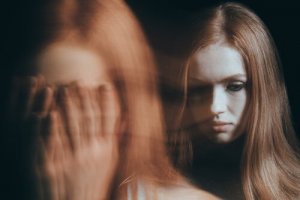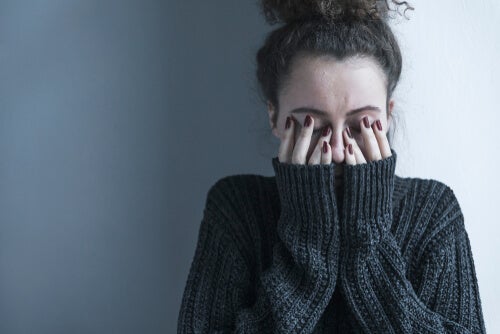Hallucinations - Characteristics and Types

Hallucinations are psychological phenomena that arouse great interest due to their uniqueness and relatively low prevalence. They’re present in various health conditions and the way in which they manifest also varies. This article is about the many different types of hallucinations that exist.
The first and most concise definition of this term is by Esquirol, a French psychiatrist who described hallucinations as “objectless perceptions“. In other words, when you suffer a hallucination, you perceive images, sounds, and smells without there being an external stimulus to elicit that perception.

Hallucinations or illusions?
People often confuse hallucinations with illusions but they’re actually quite different. There’s an external stimulus during an illusion but a person has the wrong perception of it. This is the case when you wake up in the middle of the night and look at the chair full of clothes in the corner and think it’s the silhouette of a person.
Another big difference is that illusions fade quickly when they pass through the reason filter. On the contrary, hallucinations present themselves with the same force and impact as reality. In fact, they resist all kinds of rational reflections. In other words, a hallucinating person has the firm conviction that what they perceive is real.
What kind of hallucinations exists?
There are several ways to classify hallucinations depending on their complexity, their cause, their mode of appearance, etc. This article will focus on the type of hallucinations that exist according to the sensory modality in which they occur.
Visual
When it comes to visual hallucinations, an individual visually perceives something that isn’t really there. These sightings can be simple such as light flashes or a lot more complex. The latter hallucinations are much more elaborate and a person can actually see complete scenes that include moving full-color figures.
These are the type of hallucinations that occur in the moments of transition between wakefulness and sleep. They’re also characteristic of altered states due to substance use and usually appear during alcohol withdrawal syndrome.
Auditory
These are the most frequent and most common in individuals with schizophrenia. As in the previous case, a person can hear only elementary sounds or complete conversations. Thus, their content is usually threatening or imperative. The hallucinating individual can hear voices that give them orders, scold them, and even hear several voices speaking about them.
Gustatory and olfactory
These hallucinations usually appear together and are much less frequent than the previous ones. They’re usually unpleasant smells and flavors.
In the case of olfactory ones, a person may think the smell comes from their own body (smell of rot) or from the outside (my whole house smelled like urine). Similarly, gustatory hallucinations can lead the person to believe someone’s trying to poison them through food.
Somatic
These are bodily sensations and physical perceptions in some parts of their bodies. An individual can feel an electric current or perceive they’re turning into rock, feel how their body is tearing apart, or how their organs are rotting.
Tactile or haptic
These kinds of hallucinations involve the sense of touch. During them, there’s the perception of being touched, grabbed, burned, or being able to touch something that doesn’t really exist.
Kinesthetic
They involve a wrong perception of the movement of the body itself. Thus, the person may feel they’re levitating or displacing.
They’re common in patients with Parkinson’s and some types of schizophrenia, as well as among those who consume psychoactive substances.

Hallucinations and mental health
Hallucinations are often associated with psychological disorders. While it’s true that this is a symptom of many mental conditions, such as schizophrenia, bipolar disorder, or dementia, it’s not their actual cause. These conditions can also be due to substance use or withdrawal, as in cases of brain injury or tumors.
Even healthy people may experience hallucinations such as sleep paralysis, migraine auras, or those who believe they see or hear a deceased loved one during their grieving process. In any case, you must consult a specialist if they’re frequent or interfere with your well-being.
All cited sources were thoroughly reviewed by our team to ensure their quality, reliability, currency, and validity. The bibliography of this article was considered reliable and of academic or scientific accuracy.
- Álvarez, J. M., & Estévez, F. (2001). Las alucinaciones: historia y clínica. Frenia. Revista de historia de la psiquiatría, 1(1), 65-96.
- Rodrigo, A. M. L., Piñeiro, M. M. P., Suárez, P. C. M., Caro, M. I., & Giráldez, S. L. (1996). Alucinaciones en población normal: influencia de la imaginación y de la personalidad. Psicothema, 8(2), 269-278.
This text is provided for informational purposes only and does not replace consultation with a professional. If in doubt, consult your specialist.








